How Gut Dysbiosis Is Making You Sick
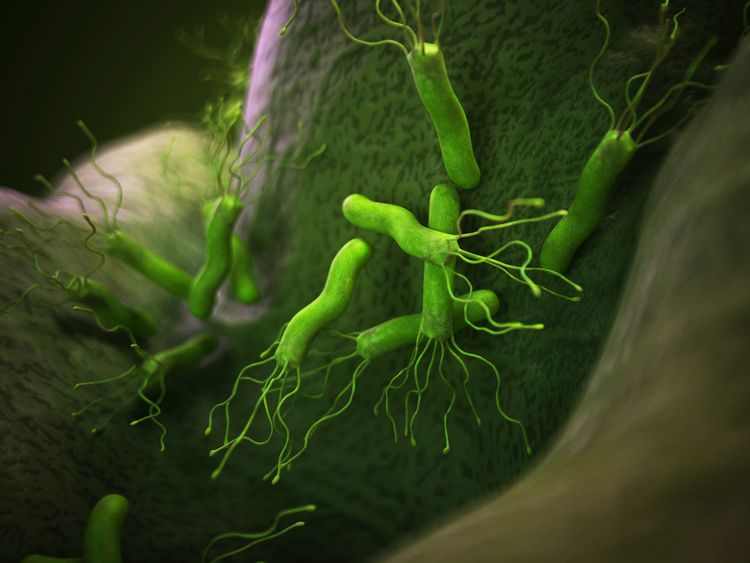
Bacteria and your microbiome are an integral part of who you are—think of yourself as a bacterial hotel.
In fact, the bacteria living in and on your body outnumber your body cells by 10 times!
While there are 10 trillion cells in your body, there are 100 trillion bacteria that comprise an estimated 400-1,000 different species that coexist within you.2
The vast majority of them reside within your GI tract, weighing in at about 3-4 pounds.2,3,6
These bacteria have coexisted with us for millennia and are beneficial, helping us thrive by assisting in digesting and absorbing foods, producing vitamins and short-chain fatty acids, killing potential pathogens, maintaining a healthy weight, and supporting detoxification, inflammatory, immune, and hormone functions.6
The good bacteria and even a small amount of yeast are vital to your survival. Studies show that people with poor bacterial colonization after c-section birth and/or lack of breastfeeding have more health problems.3
While most of these organisms are helpful and essential, some are harmful and cause significant damage to the delicate balance of the ecosystem that exists in your gut.
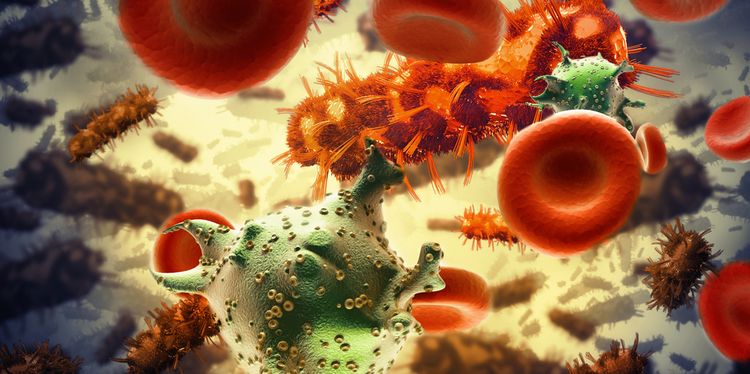
What Exactly is Dysbiosis and How Does it Occur?
Dysbiosis occurs when harmful organisms, such as bacteria, fungi (yeast and mold), viruses, and parasites take over the gut environment and change your physiology such that it favors their survival (and that of other pathogens) to the detriment of your health.
What constitutes a healthy microbiome is constantly being redefined as more research is done. Recent research suggests that we may need to consider viruses, in addition to bacteria, as part of our commensal microbiome. “There have been suggestions that every individual harbors approximately 8-12 chronic viral infections at any given time, and these may be harmful only in the limited percentage of the population that has a certain genetic predisposition.”
The good bacteria collectively act as the Chief Operating Officer in your gut, keeping vital day-to-day functions occurring effortlessly without you even knowing it.
They help maintain immune and hormone function, modulate inflammation, protect you from pathogens, and metabolize and produce nutrients.
The primary reason this harmonious equilibrium of organisms can be maintained is that there’s a system of checks and balances so that one group can’t take control; however, when this balance is disrupted by stress, diet, medications, or toxins, dysbiosis is the result.
Dr. Leo Galland, M.D. simply states, “Dysbiosis is an unfavorable imbalance of the bacteria resulting in an intestinal flora that has harmful effects. The principal factors that regulate the composition and distribution of the GI flora are diet, motility, the nature of GI secretions, immune function, and the ingestion of antibiotic or probiotic substances.”8
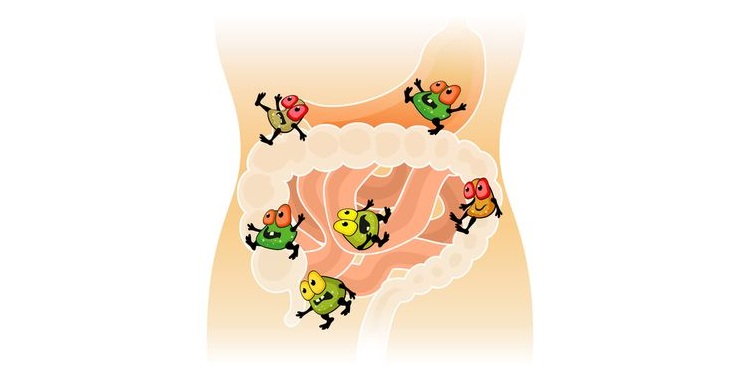
Over time, the change in the intestinal ecosystem causes considerable chronic local and systemic effects. Dr. Gerard Mullin, M.D. asserts that, “Dysbiosis is not so much about the microbe as it’s about the effect of that microbe on a susceptible host; it’s about the relationship between the host and the microbe.”14
For example, people with inflammatory or autoimmune conditions often present with a pathogenic inflammatory response to a non-inflammatory microbe due to the activation of the immune system and the inflammatory chemicals produced in that interaction.12
If it’s caught and reversed quickly, you may not have too many ill effects. However, if this condition is allowed to progress, it can lead to serious health problems ranging from gas, diarrhea, constipation, and acne to joint pain, chronic fatigue, and autoimmunity.
Further, intestinal dysbiosis can lead to dysbiosis of other mucosal areas such as the mouth, nose, lungs, skin, eyes, and vaginal and urinary tracts, making you more vulnerable to other infections.
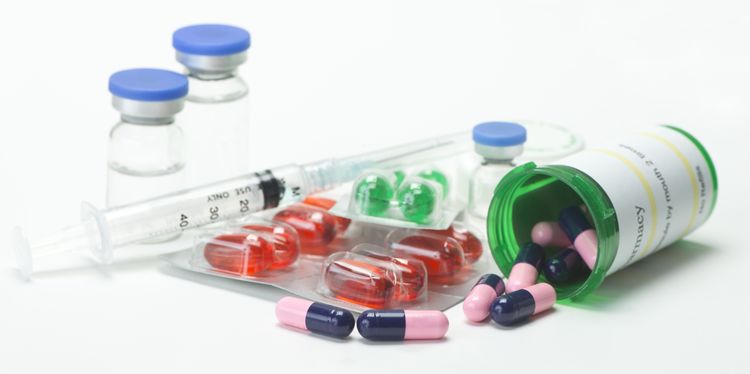
Triggers of Dysbiosis
Triggers for the development of dysbiosis are usually multiple and cumulative—meaning that the more you experience these as a part of your lifestyle, the more likely you are not only to have dysbiosis but also to have many of the symptoms associated with it. The main primary contributors to dysbiosis are:
- Poor bacterial colonization
- Medications
- Stress
- Diet
- Environmental toxins
- Infections

Trigger of Dysbiosis: Poor Colonization
The first step toward dysbiosis can actually occur during your birth. The process of vaginal birth naturally initiates the critical event of bacterial colonization.
Infants born this way have a microbiota that reflects their mother’s fecal and vaginal flora, where those born via cesarean section have a flora reflective of the hospital environment and the health care workers.3,12
Children born through c-section are also at risk of delayed access to breast milk, which can be an additional detriment to the development of a healthy flora.3
Research by Giacomo Biasucci et al. in the September 2008 issue of the Journal of Nutrition showed that the gut microbiota after c-section was characterized by a lack of Bifidobacteria species, which are thought to be important to the postnatal development of the immune system, whereas vaginally delivered neonates showed a predominance of these species.3,12
It’s also important that women who want to conceive are aware of the health of their intestinal flora, as infants born to women with dysbiosis also have dysbiosis. Taking care of GI infections and imbalances, as well as supplementing with specific probiotics, will help impart a healthy flora to the baby.

Trigger of Dysbiosis: Medications
Several categories of medications can directly impact the health of the GI flora. The most significant ones include:
Antibiotics: This class of medications is the most common and significant cause of major alterations in normal GI tract flora.6
Depending upon the scope of antimicrobial activity, antibiotics can wipe out multiple categories of beneficial organisms, leading to dysbiosis—the antibiotics don’t differentiate between the good guys and bad guys
If this impact is significant, beyond general dysbiosis it can produce an overgrowth of existing flora such as yeast (Candida) and Clostridium difficile, resulting in potentially severe and life-threatening (in the case of C. difficile) systemic effects.
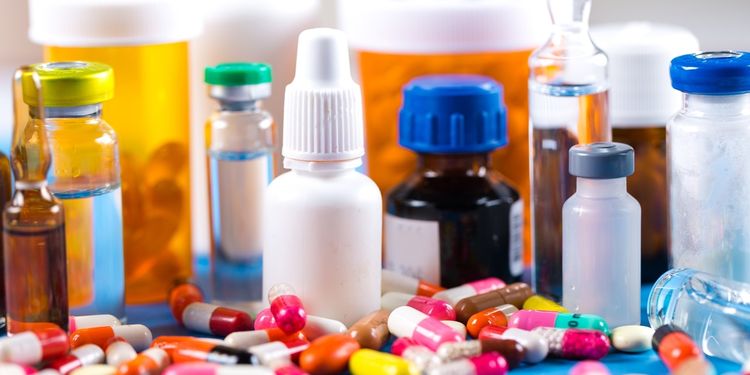
PPIs: Proton pump inhibitors that block stomach acid (HCl) production provide a gateway for dysbiosis to develop, as HCl is critical to the normal process of digestion and acts as defense against pathogens. PPIs are known to directly alter the gut flora as well.
NSAIDs: Chronic use of nonsteroidal anti-inflammatory drugs such as ibuprofen, naproxen sodium, aspirin, and indomethacin can inhibit the growth of good bacteria and alter the gut flora, resulting in leaky gut, which further perpetuates dysbiosis.
Hormone-Based Medications: According to Gut and Psychology Syndrome author Dr. Natasha Campbell- McBride, M.D., “The use of birth control pills and immune system-altering steroidal hormones change the gut flora by harming the beneficial bacteria.” Widespread use of hormone-based medication isn’t often mentioned yet is a significant contributor to dysbiosis.

Trigger of Dysbiosis: Stress
Stress is one of the most important triggers of dysbiosis, as it’s something most of us have plenty of in our lives, and we don’t do much to counterbalance its effects.
The biochemical effects of stress, such as decreased blood flow, oxygenation, motility, enzyme output, and nutrient absorption directly impact the intestinal flora.18
Dr. Gerard Mullin, M.D. explains that “stress directly suppresses the beneficial bacteria Lactobacilli and Bifidobacteria, which are critical to GI health.”14
Further, chronic stress diminishes immunity by depleting the antibody secretory IgA (sIgA), as well as essential hormones, and promotes inflammation, which can all result in a leaky gut. 6,14
The catecholamine hormones (adrenaline and noradrenaline) stimulate growth of gram-negative organisms such as E.coli, Yersinia, and Pseudomonas, which promote inflammation and immune system activation by producing the endotoxin LPS (lipopolysaccharide).3,6,14
Many of these gram-negative bacteria are normal inhabitants of the large intestine; however, when the good flora are diminished, they can’t keep growth of these opportunistic organisms in check. This leads to dysbiosis and inflammation.
All of this culminates in a vicious, self-perpetuating cycle when you’re chronically stressed.

Trigger of Dysbiosis: Diet
Diet, along with stress, exerts the most impact on the balance and health of the gut flora.
“The composition of the diet has been shown to have a significant impact on the content and metabolic activities of the human fecal flora. Some diets promote the growth of beneficial microorganisms, while others promote activity that can be harmful to the host,” according to Hawrelak and Myers in their 2004 review study. 6 The following categories are major contributors to dysbiosis:
- Sulfates: Consumption of foods high in sulfates promotes the growth of bacteria that produce a toxic gas called hydrogen sulfide (think stinky egg smell), which results in depletion of colonic nutrients and leaky gut. Foods high in sulfates include eggs, cruciferous vegetables, dairy, dried fruit, alcohol, meat, baked goods, and processed foods.6
- High Protein: Excessive consumption of protein, especially in the presence of enzyme deficiency, allows bacteria to ferment the undigested protein particles and produce toxic metabolites such as ammonia, indoles, phenols, and sulfides, which are carcinogenic and promote migraines and mood disorders.6,7 High protein diets can also promote inflammation and hormone imbalance through the action of some bacterial enzymes such as beta-glucuronidase.6,7

PHOTO: ALEXANDRA LANDE/SHUTTERSTOCK.COM
- High Sugar and Carbohydrates: Diets high in sugars and simple carbohydrates are characterized by increased bacterial fermentation and decreased intestinal transit speed, allowing for toxic metabolites to sit in the intestines longer and potentiate inflammation.6,7
- Bad Fats: Eating a diet high in trans fats and certain chemically processed or genetically modified fats inhibits the growth of protective bacteria.7 These fats include any trans fat labeled “partially hydrogenated,” shortening and margarine, as well as oils including canola, corn, soybean, peanut, sunflower, and safflower.
- Processed Foods: Preservatives, dyes, emulsifiers, surfactants, additives, and flavoring all negatively impact the health of the gut flora, as they’re toxins. When you read a label, generally if you can’t pronounce it or don’t know what it is, you shouldn’t eat it.

Food sensitivities and allergies represent a potent trigger for dysbiosis, as the immune system reacts to the protein peptides of the offending foods by producing pro-inflammatory chemicals called cytokines that damage the intestinal mucosa, not only leading to a leaky gut but also making the environment inhospitable to the good flora.
In conditions such as Celiac, where the immune system is reacting to the family of gluten-related peptides, it’s been discovered that the gut microbiota plays a significant role in the development and progression of the illness.
Research has found that levels of beneficial flora such as Lactobacillus and Bifidobacteria in Celiac patients is much lower than in healthy individuals.7
Overall, higher incidence of gram-negative and pro-inflammatory bacteria present in the microbiota is linked to the symptoms associated with the disease by favoring the pathological progress of the disorder.7
Studies have also noted that a similar profile of decreased good bacteria and higher levels of bad bacteria are seen in the development of food sensitivities and allergies to milk, eggs, and nuts.7
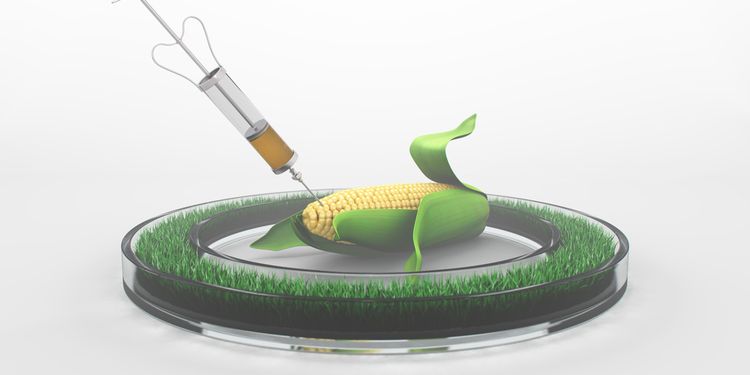
It’s important to note that you can develop a food sensitivity or allergy at any time in your life to any food, not just the common ones (gluten, dairy, soy, corn, eggs, shellfish, and nuts).
GMO (genetically modified organism) or hybridized foods also represent a potent source for dysbiosis and the development of food sensitivities, as they aren’t as recognizable to your immune system as the original food form. This can trigger an inflammatory and immune response in the gut, potentiating dysbiosis.

Trigger of Dysbiosis: Environmental Toxins
Environmental toxins are everywhere—metals, volatile organic compounds (VOCs), and chemicals are found in the air, water, soil, industry, and products used on your body and in the home.
Food can also be a significant source of toxins depending upon where and how it’s grown, as well as if it’s processed.
If you’re a fan of grilling your food, you are adding yet another layer of toxins from the heterocyclic amines (HCAs) that are produced in the tasty charred portions. The cumulative effect of exposure to these substances over time can have a profound impact on the health of your intestinal microbiome, potentially leading to dysbiosis.
A 2008 study found that the volatile derivatives from metals such as mercury, arsenic, bismuth, and antimony exert their toxic effects on human health not only by direct interaction with host cells but also by disturbing the physiological gut microflora.18
The metals not only alter the composition of the organisms in the gut, but the bacteria themselves can transform the toxic metals into even more toxic compounds. Toxins of all kinds shift the balance of the flora into supporting the harmful organisms over the favorable ones.

Trigger of Dysbiosis: Infections
Toxins are not only acquired from the external environment but can also be prevalent internally, because they’re produced from infectious organisms such as certain bacteria, mold, yeast, viruses, and parasites. These organisms contribute to dysbiosis because they produce toxins that are detrimental to your body by:
Altering normal GI function: The organisms exert their damaging effects by decreasing gut motility, decreasing the amount of stomach acid and digestive enzymes, and altering bile production. These mechanisms help ensure their survival.16
Promoting inflammation: GI infections promote inflammation through the production of toxins such as lipopolysaccharides (LPS) in certain gram-negative bacteria and mycotoxins from mold. They also generate several different types of immune responses, which promote inflammation and also produce autoimmunity.16
Altering the GI flora: The gut microflora is often already compromised to some extent when a GI infection occurs. The infective organisms increase dysbiosis by their mere presence and by making the intestinal environment more hospitable to other pathogens and opportunistic commensal organisms (organisms that are normally found in the intestines of healthy individuals that take advantage of your compromised physiology).

After infectious organisms take hold, you may experience gas, bloating, diarrhea, constipation, or even no gut-related symptoms at all.
Brain fog, fatigue, sleeplessness, joint pain, depressed mood, and anxiety are often related to these infections. Some of the most common organisms include:
SIBO: Small intestinal bacterial overgrowth occurs when organisms from the colon inhabit the small intestine, where fewer bacteria reside.
Escherichia coli, Streptococcus, Staphylococcus, and Klebsiella are species frequently associated with SIBO. SIBO is complex, because the constituent organisms vary widely from person to person, as do symptoms, which can include constipation, diarrhea, gas, bloating, belching, stomach pain, malabsorption, brain fog, mood disorders, headaches, fatigue, and rashes, among others.
Parasites: Giardia lamblia, Blastocystis hominis, Entamoeba histolytica, Dientamoeba Fragilis, and Endolimax nana cause a majority of the parasitic infections the U.S.8,20
Acute parasitic illness manifests with symptoms of diarrhea, vomiting, stomach pain, bloating, fever, and malaise, while chronic infections range from asymptomatic to severe, resulting in bloody and mucus-filled stools, profuse diarrhea, and malnutrition. Parasitic infections are also related to interrupted sleep patterns and tooth grinding during sleep.

H. pylori: Helicobacter pylori is a spiral-shaped bacteria that is estimated to inhabit two-thirds of the world’s population. Some people happily coexist with it while others develop chronic conditions, because it can become opportunistic.
It alters immune function and stomach acid production to aid its survival while you experience reflux, indigestion, gas, bloating, and stomach pain.
Candida: Candida (yeast) is a fungus that lives in your mouth and intestines to aid with digestion and nutrient absorption.19 It can become pathogenic and rapidly increase in numbers if your immune system is compromised from stress or illness.
The infection can be almost anywhere in your body, from the mouth and stomach to the urinary tract, skin, and lungs. Some symptoms associated with Candida include sugar cravings, depression, anxiety, gas, bloating, headaches, rashes, and skin discoloration.
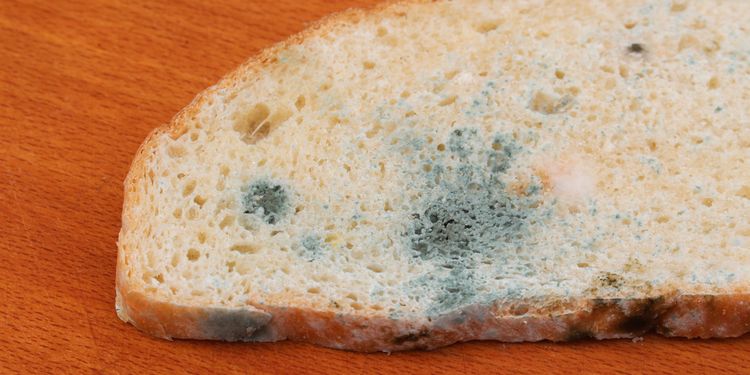
While the previously-mentioned infections are commonly related to dysbiosis, some important and often overlooked sources of infection include:
Mold: Mold is a fungus like Candida, and both are ubiquitous. Some common types of mold associated with dysbiosis include Aspergillus, Penicillium, Stachybotrys, and Alternaria.
The toxins produced from mold can be very harmful to the good gut bacteria and the host (you). These toxins produce symptoms ranging from mild to severe fatigue, sore throats, nosebleeds, headaches, diarrhea, brain fog, food sensitivities, and memory loss.
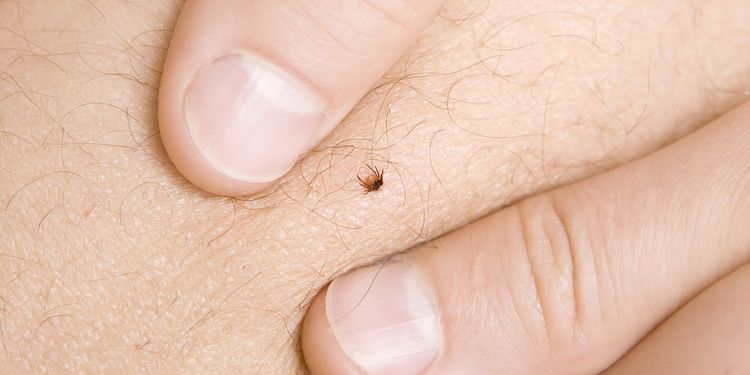
Tick-borne Illness: Tick-borne illnesses are prevalent primary infections or co-infections that can result in dysbiosis through several mechanisms.
First-line treatment of these infections often involves the use of antibiotics for weeks in acute cases and for months for chronic infections, killing off the good bacteria and promoting yeast overgrowth according to Dr. Leo Galland.21
These infections also result in “Bell’s Palsy of the gut,” ranging from paralysis of the gut to decreased GI motility, allowing dysbiosis to occur. 21,22
Lyme disease, an infection acquired through the bite of a tick infected with the bacteria Borrelia burgdorferi, is the most commonly-known infection. Babesia, Rickettsia (Rocky Mountain Spotted Fever), Ehrlichia, and Bartonella are also frequently identified as infectious bacteria from tick bites. Symptoms include rash, fatigue (often chronic), fever, aches, stiffness, brain fog, and constipation.
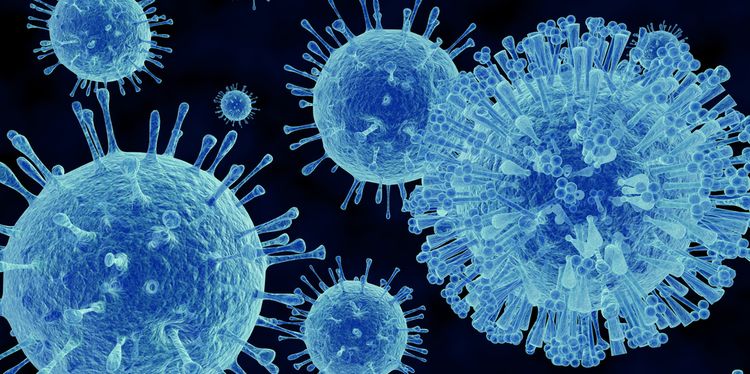
Viruses: Chronic viral infection is a common but often ignored cause of dysbiosis. Enteric (GI) viruses play an important role in the microflora of the gut, as they’re present in all of us and affect not only our gene expression but also the composition of the gut microbiota.
A 2014 study notes, “Viruses may act directly on the host epithelium and immune system to induce inflammation, or may alter luminal bacterial composition that then provokes disease.” 23
A further complication is that some viruses such as cytomegalovirus (CMV) and Epstein-Barr virus can remain latent after initial infection and only become active again under stress or immunosuppression, producing inflammation and GI symptoms that don’t appear to be related to the current pathological process.23
Symptoms and Effects of Dysbiosis
Alteration of the gut microbiome can have wide-ranging consequences on a person systemically—these effects aren’t limited to the gut.

The inflammatory process generated by dysbiosis is one of the primary root causes in many conditions.
The inflammation produces chemical changes in the body that activate the immune system, and it also increases or decreases the expression of certain genes, enabling the disease process to evolve.
What began as smoldering embers becomes a systemic wildfire when there’s no intervention or lifestyle change, allowing a simple process to potentially become a complex condition that is difficult to manage.
Symptoms of an unstable gut microbiome include:
- GI: Gas, bloating, belching, stomach pain, constipation, diarrhea, undigested food particles or fat in stool, gurgling in stomach, acid reflux, malabsorption, altered motility or gastroparesis, and food sensitivities or allergies
- Immune: Allergies, asthma, chronic sinus infections, frequent infections such as respiratory or urinary tract infections, Candida overgrowth, and autoimmune conditions
- Liver: Poor detoxification, recirculation of toxins and hormones from bacterial deconjugation, increased or decreased bile production, and pain under the lower right ribs
- Skin: Itching, hives, acne, rosacea, rashes, eczema, psoriasis, and dermatitis
- Musculoskeletal: Joint pain, muscle pain, and fibromyalgia
- Brain and Mood: Headache, fatigue, neuropathy, brain fog, inability to focus, irritability, anxiety, depression, ADD/ADHD, lack of coordination or balance, and poor memory
- Hormone: Fatigue, poor temperature control, weight gain or weight loss, poor sleep quality, food cravings, poor blood sugar regulation, and hormone imbalances

Treatment of Dysbiosis
Treatment of dysbiosis can be as basic as using probiotics and gut-supporting nutrients in the most simple cases, or it can escalate to treating multiple infections and addressing autoimmunity in more complex cases.
Identifying and resolving all triggers and making appropriate lifelong lifestyle changes are key to reversing dysbiosis and eliminating inflammation.
The process of addressing triggers should begin with identification and elimination of all potential pathogenic GI infections through testing. Non-pathogenic bacterial overgrowth must also be identified and treated. This should be the first step of a comprehensive 5R program that includes these components:

1. Remove sources of irritation and inflammation:
- Remove all sources of parasitic, fungal, and bacterial infections in the gut (from mouth to anus). If you take care of these without resolution of symptoms, look into viruses, mold, and other infections like tick-borne illnesses. Infections of the jaw from root canals and dental work are sometimes a source of hidden infection that should be investigated as well.
- Eliminate foods that contribute to inflammation and all known food allergies. An anti-inflammatory, whole foods-based diet is best.
- Try to eliminate the use of medications known to contribute to dysbiosis and irritation of the intestinal lining.
- Refrain from alcohol consumption, as you’re trying to restore bacterial balance in the gut.
- Reduce toxin exposure by eating organic when possible, using cleaner personal care and home products, and filtering your home air and water. Many green plants provide natural toxin filtration.
- Prepare foods so that there are no charred areas produced. Marinating foods with lemon, garlic, and rosemary for several hours before cooking will help buffer the effects of any char that is produced.

2. Replace the nutrients your body needs to heal:
- Beginning a meal with digestive enzymes and betaine hydrochloride will allow for proper breakdown and absorption of nutrients.
- Prebiotic fiber such as FOS and inulin from onions, garlic, blueberries, asparagus, bananas, chicory, and artichoke promote the growth of beneficial bacteria and discourage harmful ones. Since these fibers are non-digestible by humans, the good flora can use them as a nutrient source. They also help prevent constipation and diarrhea by maintaining colonic balance.12
- Fermented foods such as yogurt, kefir, kombucha, sauerkraut, kimchi, and some varieties of pickled vegetables are cultured with bacteria and yeast strains that help maintain intestinal flora.
- Resistant starches, or starches that resist digestion until they reach the colon, can be found in raw potatoes, green bananas, green plantains, parboiled rice, lightly-cooked and cooled potatoes, or legumes (that have been soaked and sprouted). Once the resistant starches reach the colon, the bacteria digest or ferment them, producing short-chain fatty acids (SCFAs) that support bacteria and intestinal cell health and modulate inflammation. Added benefits are that they help improve insulin sensitivity, as well as blood sugar and body composition.
- Soluble (completely fermentable) and insoluble fibers (little to no fermentation) like grains, fruits, vegetables, and psyllium also provide nutrients to the beneficial bacteria and help prevent constipation.12 They keep your bowels moving.

PHOTO: KNINWONG/SHUTTERSTOCK.COM
3. Re-inoculate with good bacteria to restore the flora:
- Using a high-quality probiotic with at least 50 billion CFU twice daily will help restore the gut flora. Lactobacillus and Bifidobacter species are best in most cases; however, there are other beneficial strains that can be used. Start off using them slowly and work up to the recommended doses.
- Fermented foods such as sauerkraut, kimchi, and kombucha, as well as kefir and yogurt (you can use dairy or non-dairy based), contain live, active cultures that will help the good bacteria stick around.
- Fecal Microbiota Transplant (FMT) may be necessary for some people who‘ve had severe infections such as C. difficile or other resistant bacterial infections who need to go further than just a probiotic. It’s used to treat a variety of intestinal diseases associated with pathological imbalances within the microbiota. The process involves having a fecal transplant from a donor that has been screened for the correct bacterial balance in order to restore the flora.10

PHOTO:BRENT HOFACKER/SHUTTERSTOCK.COM
4. Repair the gut lining and normal physiological functions:
- Dysbiosis often involves leaky gut as well as disruption of normal physiological processes of digestion, which all need to be addressed in order to maintain a healthy flora and GI function. This includes using betaine HCl to increase stomach acid, digestive enzymes to assist the pancreas, intestines, and liver until they produce adequate levels on their own, and sometimes ox bile to assist the liver in the digestion of fats.
- Additionally, motility—the ability to keep waste and toxins moving through the GI tract—often needs to be repaired and restored. Ginger and d-limonene are good agents to stimulate GI motility. Exercise or movement and proper hydration are also great ways to keep the bowels moving.

5. Rebalance your body to heal faster and maintain vibrant health moving forward:
- Calming the nervous system and decreasing stress through breathing techniques, meditation, yoga, Tai Chi, or walks in nature are great ways to achieve this. Stress for most people is unavoidable, so learning to manage it through creating boundaries, learning to say no, or having a proper outlet to release it is key.
- Exercise and movement are also essential in decreasing stress and maintaining the balance of the body and the brain.
- One of the most important measures you can take is to fall asleep at a reasonable hour (10 pm is ideal), as well as get at least eight hours of high quality, uninterrupted sleep. Sleep is crucial to the healing process, as well as the maintenance of overall good health.



